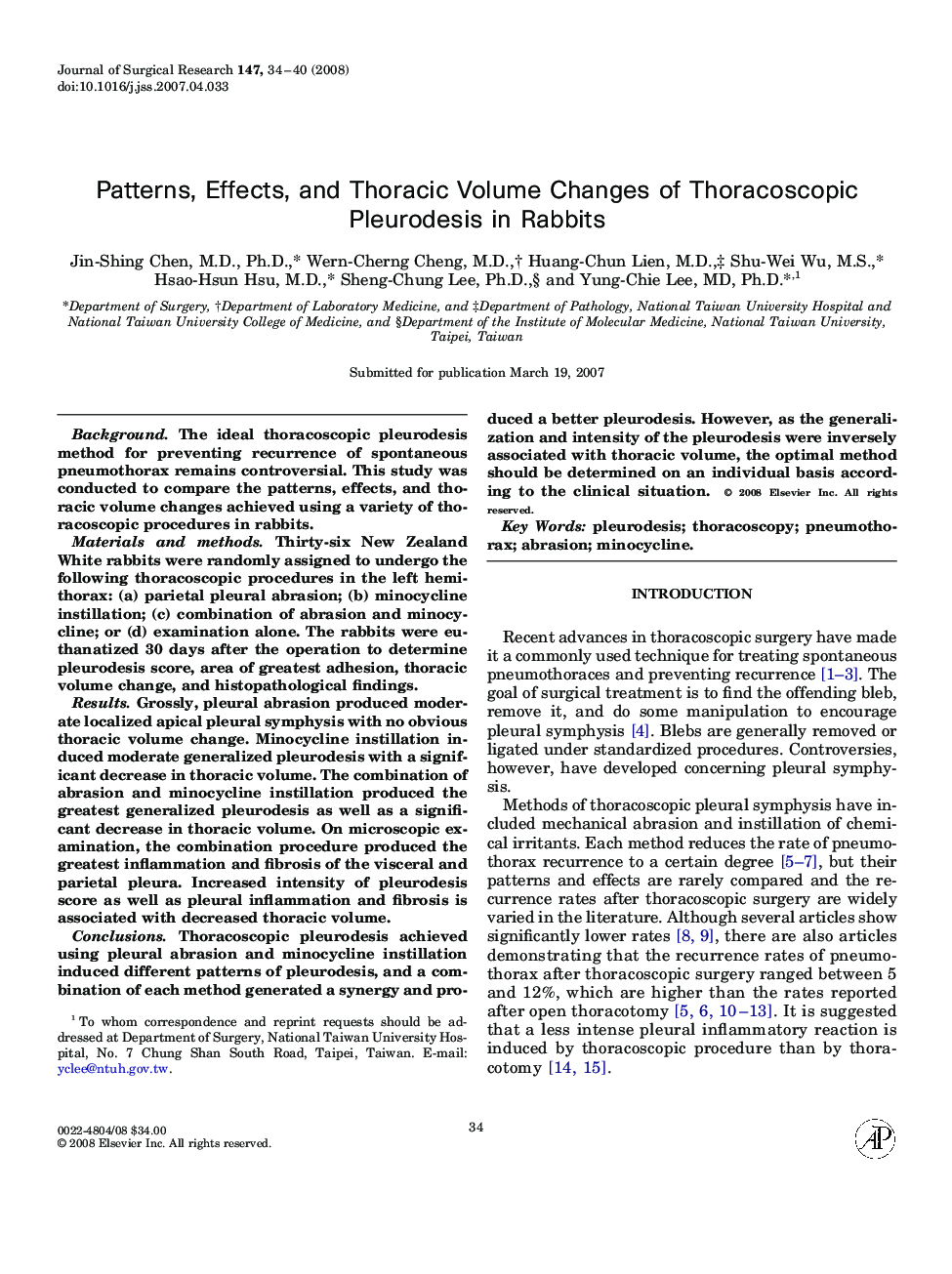| Article ID | Journal | Published Year | Pages | File Type |
|---|---|---|---|---|
| 4304400 | Journal of Surgical Research | 2008 | 7 Pages |
BackgroundThe ideal thoracoscopic pleurodesis method for preventing recurrence of spontaneous pneumothorax remains controversial. This study was conducted to compare the patterns, effects, and thoracic volume changes achieved using a variety of thoracoscopic procedures in rabbits.Materials and methodsThirty-six New Zealand White rabbits were randomly assigned to undergo the following thoracoscopic procedures in the left hemithorax: (a) parietal pleural abrasion; (b) minocycline instillation; (c) combination of abrasion and minocycline; or (d) examination alone. The rabbits were euthanatized 30 days after the operation to determine pleurodesis score, area of greatest adhesion, thoracic volume change, and histopathological findings.ResultsGrossly, pleural abrasion produced moderate localized apical pleural symphysis with no obvious thoracic volume change. Minocycline instillation induced moderate generalized pleurodesis with a significant decrease in thoracic volume. The combination of abrasion and minocycline instillation produced the greatest generalized pleurodesis as well as a significant decrease in thoracic volume. On microscopic examination, the combination procedure produced the greatest inflammation and fibrosis of the visceral and parietal pleura. Increased intensity of pleurodesis score as well as pleural inflammation and fibrosis is associated with decreased thoracic volume.ConclusionsThoracoscopic pleurodesis achieved using pleural abrasion and minocycline instillation induced different patterns of pleurodesis, and a combination of each method generated a synergy and produced a better pleurodesis. However, as the generalization and intensity of the pleurodesis were inversely associated with thoracic volume, the optimal method should be determined on an individual basis according to the clinical situation.
